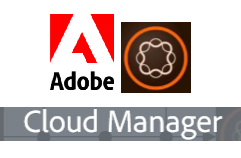Brief Overview:
As we all know, Adobe Cloud Manager(ACM) is part of the Adobe Managed Cloud Services. Using Adobe Cloud Manager(ACM) organizations can manage their AEM application in cloud themselves.
 -It includes a continuous integration and continuous delivery.
-It includes a continuous integration and continuous delivery.
-Code Inspection, performance testing and security validation.
-Automatic, scheduled or manual deployment.
ACM documentation can be found here.
Can we move existing projects in to ACM?
Yes. We can move any existing AEM projects into ACM with recommended option of upgrading AEM version to the latest.
How safe if Adobe cloud service?
Below given the security measures in Adobe Cloud Manager in detail.
Code push to Cloud Manager is encrypted in transit. Cloud Manager build binaries are also encrypted in transit and when stored.
Each customer gets their own Git Repository and code is secure and not shared with any other Organizations.
All the code push happens securely into the Git Repository over HTTPS protocol.
Any service with third party cloud providers are always secured.
ACM(Adobe Cloud Manager) provides Role Based Permissions, which ensure the user action on application is defined within limits, which means developer will not be able to delete the application from cloud, only the authorized product owner or person will have critical permissions.
Quality checks
There are 3 types of check provided by ACM CI/CD process.
Technical details of ACM build environment
Additional system packages include,
Imagemagick, Graphicsmagick, bzip2, unzip etc.
Types of build pipe line configuration
3 Ways we can configure the CI/CD pipeline process on stage.
The ACM build does code inspection based on SonarQuebe, which includes around 110 rules like standard Sonar Java rules,FindBugs rules, Cognifide AEM Rules, Adobe-created Rules
Read More:
Quality, Security, Performance Checks in Adobe Cloud Manager
As we all know, Adobe Cloud Manager(ACM) is part of the Adobe Managed Cloud Services. Using Adobe Cloud Manager(ACM) organizations can manage their AEM application in cloud themselves.
 -It includes a continuous integration and continuous delivery.
-It includes a continuous integration and continuous delivery.-Code Inspection, performance testing and security validation.
-Automatic, scheduled or manual deployment.
ACM documentation can be found here.
Can we move existing projects in to ACM?
Yes. We can move any existing AEM projects into ACM with recommended option of upgrading AEM version to the latest.
How safe if Adobe cloud service?
Below given the security measures in Adobe Cloud Manager in detail.
Code push to Cloud Manager is encrypted in transit. Cloud Manager build binaries are also encrypted in transit and when stored.
Each customer gets their own Git Repository and code is secure and not shared with any other Organizations.
All the code push happens securely into the Git Repository over HTTPS protocol.
Any service with third party cloud providers are always secured.
ACM(Adobe Cloud Manager) provides Role Based Permissions, which ensure the user action on application is defined within limits, which means developer will not be able to delete the application from cloud, only the authorized product owner or person will have critical permissions.
Quality checks
There are 3 types of check provided by ACM CI/CD process.
- Code Quality
- Performance Testing
- Security Testing
Technical details of ACM build environment
- ACM uses below build environment for managing CI/CD process
- Linux based container
- Oracle Java version 8
- Maven version 3.3.9
- Adobe maven repository(repo.adobe.com) included default
Additional system packages include,
Imagemagick, Graphicsmagick, bzip2, unzip etc.
Types of build pipe line configuration
3 Ways we can configure the CI/CD pipeline process on stage.
- Manual
- On Git Changes
- Recurring schedule
- GoLive approval,
- CSE oversight
- Scheduled
The ACM build does code inspection based on SonarQuebe, which includes around 110 rules like standard Sonar Java rules,FindBugs rules, Cognifide AEM Rules, Adobe-created Rules
Read More:
Quality, Security, Performance Checks in Adobe Cloud Manager





























